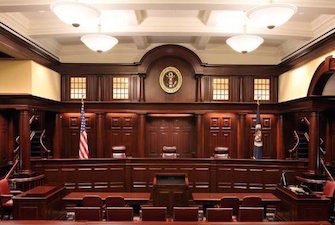 LifeNet Health v. LifeCell Corp., (Before Reyna, Chen, Prost C.J.) (Opinion for the court, Prost, C.J.) Click Here for a copy of the opinion.
LifeNet Health v. LifeCell Corp., (Before Reyna, Chen, Prost C.J.) (Opinion for the court, Prost, C.J.) Click Here for a copy of the opinion.
Lifenet’s patent is for plasticized soft tissue grafts used for transplantation in humans. The specification discloses that plasticizers can be removed before implantation, although they need not be, as claim 1 discloses three options for the implanting technician, one option being direct implantation without removing plasticizers. LifeCell’s accused grafts are preserved in a solution prior to implantation, and it is undisputed that significant amounts of plasticizers are removed during this soaking process. During claim construction, the parties disputed the meaning of the term “non-removal.” The district court concluded that construction of this term was unnecessary because it was easily understood by a person of ordinary skill in the art to have its plain meaning.
After claim construction and trial, the jury found that LifeCell’s grafts infringed the Lifenet patent, and it also found that LifeCell failed to establish any of its invalidity defenses. The district court awarded Lifenet damages and denied LifeCell’s post-trial JMOL motions. LifeCell appealed.
LifeCell argued that the district court erred by allowing the jury to resolve a dispute about the scope of the claim limitation where “said one or more plasticizers are not removed from [an] internal matrix of [the] plasticized soft tissue graft” and that the accused products do not meet this limitation. LifeCell also argued it did not directly infringe; rather, independent surgeons or other assistants prepared the grafts for transplantation. Finally, LifeCell argued that the claims were either anticipated or obvious over prior art.
When “parties raise an actual dispute regarding the proper scope of… claims, the court, not the jury, must resolve that dispute.” See O2 Micro International Ltd. v. Beyond Innovation Technology CO., 521 F.3d 1351 (Fed. Cir. 2008). LifeCell argued that the district court should have intervened to instruct the jury that the claims prohibited the removal of any plasticizer from any part of the graft, and not doing so was a reversible error under O2 Micro. The Federal Circuit found held that LifeCell’s argument related to both the location of the plasticizers and the degree of non-removal. The infringement theory was that a wash of the accused products removed plasticizers from gaps and voids of the tissue grafts, but not from the internal matrix. LifeCell argued on appeal that the gaps and voids also constituted the internal matrix. The Court held that this was not a timely argument to modify the district court’s claim construction. LifeCell did not dispute that the plasticizer could not be removed from the internal matrix, nor did it ask the district court to adopt its new construction. Thus, LifeCell’s evidentiary challenges amounted to a new claim construction argument raised on appeal. Further, the Court found no inconsistency between the testimony of Lifenet’s expert during trial and his Markman declaration. Thus, the Court held that the district court did not err by denying JMOL or a new trial on non-infringement.
As to direct infringement, LifeCell argued that the non-removal limitation could not be met until an independent third party prepared and used the accused products. LifeNet countered that the product that leaves LifeCell is complete and infringes in that condition without affirmative third party action. The Court held that functional limitations recited in the negative may describe a capability or structural element. In this case, the non-removal limitation was a negative limitation stating that the plasticizers remain in the internal matrix prior to transplantation, and that the plasticizer could remain in the internal matrix during transplantation without the need to be removed. This did not require the action of a third party. Thus, the Court held that the non-removal limitation did not relieve LifeCell of direct infringement.
The Court also held no error in denying JMOL for indefiniteness, since there were no claims that mixed an apparatus with a method of using that apparatus, contrary to LifeCell’s position. Finally, the Court held that the prior art cited by LifeCell failed to disclose “plasticized soft tissue graft”, and therefore, LifeCell’s anticipation argument failed. Similarly, LifeCell failed to provide a basis for this limitation outside of the cited reference, which precluded a finding of obviousness. Thus, the Court affirmed the district court’s judgment.
A timely request to modify the district court’s claim construction is necessary to successfully challenge a jury’s findings under a disputed claim construction, under the O2 Micro precedent.

![[IPWatchdog Logo]](https://ipwatchdog.com/wp-content/themes/IPWatchdog%20-%202023/assets/images/temp/logo-small@2x.png)


![[Advertisement]](https://ipwatchdog.com/wp-content/uploads/2024/04/Patent-Litigation-Masters-2024-sidebar-early-bird-ends-Apr-21-last-chance-700x500-1.jpg)

![[Advertisement]](https://ipwatchdog.com/wp-content/uploads/2021/12/WEBINAR-336-x-280-px.png)
![[Advertisement]](https://ipwatchdog.com/wp-content/uploads/2021/12/2021-Patent-Practice-on-Demand-recorded-Feb-2021-336-x-280.jpg)
![[Advertisement]](https://ipwatchdog.com/wp-content/uploads/2021/12/Ad-4-The-Invent-Patent-System™.png)







Join the Discussion
No comments yet.